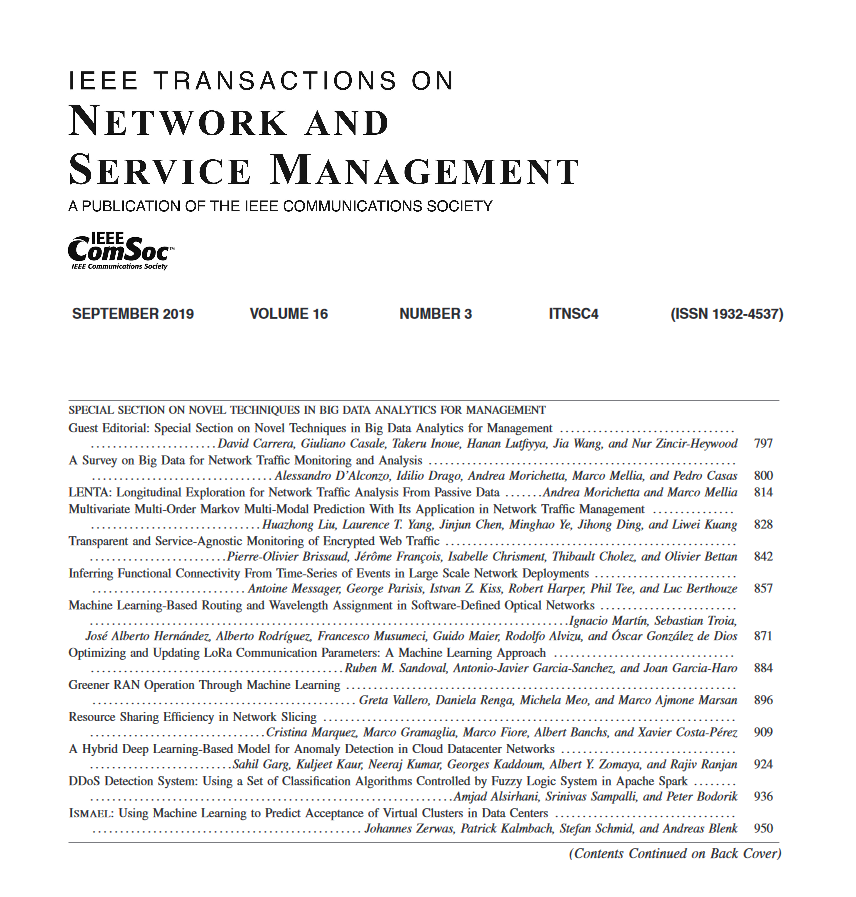Programmable Real-Time Scheduling of Disaggregated Network Functions: A Theoretical Model
IF 5.4
2区 计算机科学
Q1 COMPUTER SCIENCE, INFORMATION SYSTEMS
IEEE Transactions on Network and Service Management
Pub Date : 2025-01-20
DOI:10.1109/TNSM.2025.3531989
引用次数: 0
Abstract
Novel telecommunication systems build on a cloudified architecture running softwarized network services as disaggregated virtual network functions (VNFs) on commercial off-the-shelf (COTS) hardware to improve costs and flexibility. Given the stringent processing deadlines of modern applications, these systems are critically dependent on a closed-loop control algorithm to orchestrate the execution of the disaggregated components. At the moment, however, the formal model for implementing such real-time control loops is mostly missing. In this paper, we introduce a new real-time VNF execution environment that runs entirely on COTS hardware. First, we define a comprehensive formal model that enables us to reason about packet processing delays across disaggregated VNF processing chains analytically. Then we integrate the model into a gradient-optimization control algorithm to provide optimal scheduling for real-time infocommunication services in a programmable way. We present experimental evidence that our model gives a proper delay estimation on a real software switch. We evaluate our control algorithm on multiple representative use cases using a software switch simulator. Our results show the algorithm drives the system to a real-time capable state in just a few control periods even in case of complex services.分解网络功能的可编程实时调度:一个理论模型
新型电信系统建立在云化架构上,运行软件网络服务作为商用现货(COTS)硬件上的分解虚拟网络功能(VNFs),以提高成本和灵活性。鉴于现代应用程序严格的处理期限,这些系统严重依赖于闭环控制算法来编排分解组件的执行。然而,目前实现这种实时控制回路的正式模型大多是缺失的。在本文中,我们介绍了一个完全运行在COTS硬件上的新的实时VNF执行环境。首先,我们定义了一个全面的形式化模型,使我们能够分析地推断跨分解的VNF处理链的数据包处理延迟。然后将该模型集成到梯度优化控制算法中,以可编程的方式为实时信息通信服务提供最优调度。实验证明,该模型对实际软件交换机的时延估计是正确的。我们使用软件开关模拟器在多个代表性用例上评估了我们的控制算法。结果表明,即使在复杂的服务情况下,该算法也可以在几个控制周期内将系统驱动到能够实时运行的状态。
本文章由计算机程序翻译,如有差异,请以英文原文为准。
求助全文
约1分钟内获得全文
求助全文
来源期刊

IEEE Transactions on Network and Service Management
Computer Science-Computer Networks and Communications
CiteScore
9.30
自引率
15.10%
发文量
325
期刊介绍:
IEEE Transactions on Network and Service Management will publish (online only) peerreviewed archival quality papers that advance the state-of-the-art and practical applications of network and service management. Theoretical research contributions (presenting new concepts and techniques) and applied contributions (reporting on experiences and experiments with actual systems) will be encouraged. These transactions will focus on the key technical issues related to: Management Models, Architectures and Frameworks; Service Provisioning, Reliability and Quality Assurance; Management Functions; Enabling Technologies; Information and Communication Models; Policies; Applications and Case Studies; Emerging Technologies and Standards.
 求助内容:
求助内容: 应助结果提醒方式:
应助结果提醒方式:


